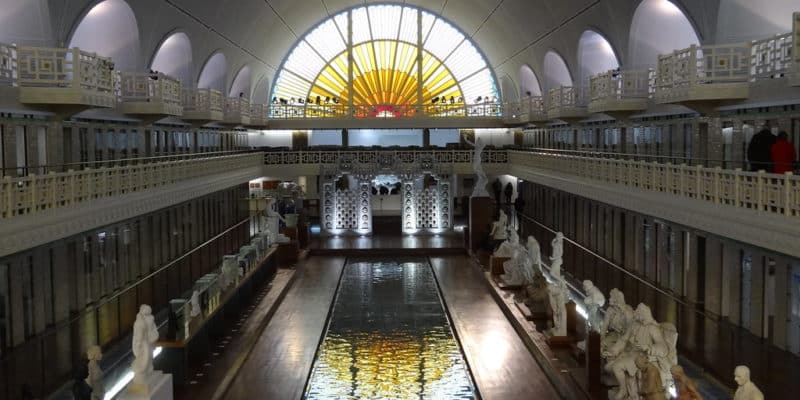La Piscine or the Museum of Art and Industry, located in Roubaix in the Hauts-de-France region, is an exceptional venue that blends industrial heritage, local history and the arts. Converted from a former Art Deco swimming pool into an eclectic museum, La Piscine offers a unique experience in cultural discovery. In this article, we invite you to delve into the history of this museum and explore the treasures it houses.
A little history
La Piscine de Roubaix was designed by architect Albert Baert between 1927 and 1932. Inspired by the Art Deco style, Baert created a building that was both functional and aesthetically pleasing, with particular attention to detail and materials. The pool was in fact much more than just a place to swim. It also included public baths, a sports hall and a solarium. Its modern facilities and elegant design soon made La Piscine one of Roubaix’s most popular venues. Unfortunately, structural problems forced La Piscine to close its doors in 1985. Left derelict for several years, the pool suffered considerable damage. However, the idea of transforming this historic building into a museum began to germinate within the municipality. In 2001, La Piscine was given a new lease of life by architect Jean-Paul Philippon. Known for his renovation of the Musée d’Orsay in Paris, Philippon preserved the original spirit of the building while transforming it into a modern museum space. The central pool has been preserved and now serves as an exhibition space for sculptures, while the former bathing cabins house collections of paintings and textiles. In 2018, La Piscine underwent a complete extension and renovation. These works enlarged the exhibition space and improved visitor reception.
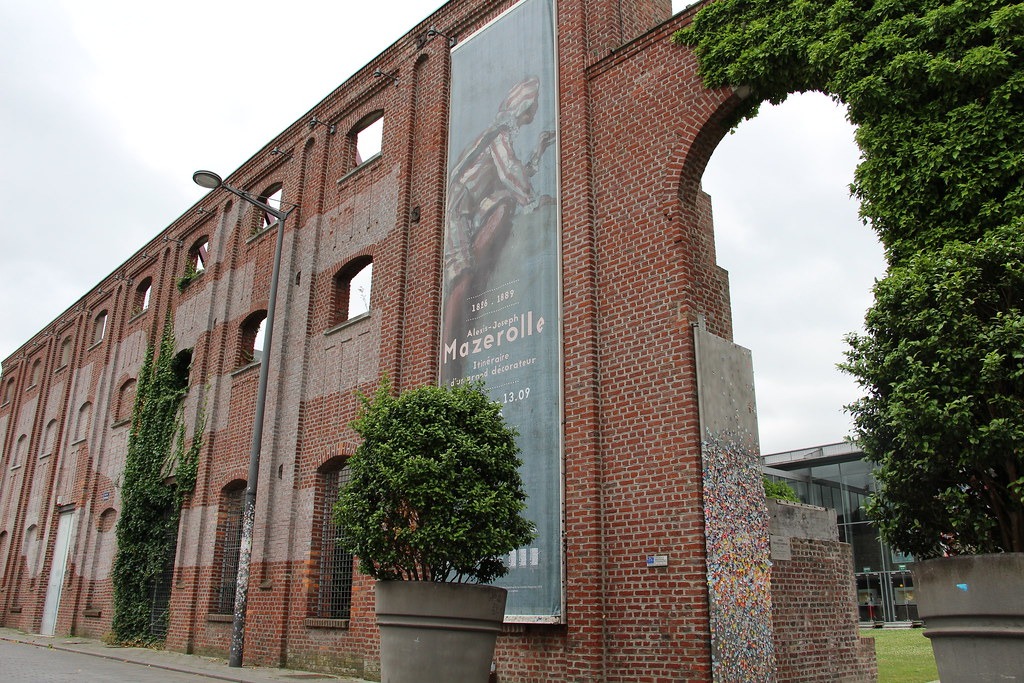
The museum facade
Unique architecture
La Piscine de Roubaix is an architectural masterpiece in the Art Deco style, an era that marked a turning point in design and architecture in the early 20th century. Art Deco is known for its bold geometric shapes, use of luxurious materials and attention to detail. These characteristics are eminently present in the design of La Piscine. The building’s façade, adorned with red brick and bluestone details, bears witness to the importance of the textile industry in Roubaix at the time. The decorative motifs, inspired by nature and industry, are a tribute to the city’s industrial past. Inside, the central basin is the centerpiece of the building. The pool, once used by workers for bathing, was preserved when the building was converted into a museum. Today, it serves as a showcase for an impressive selection of sculptures. The bathing cabins lining the pool have been converted into exhibition galleries for paintings, ceramics and textiles. Another remarkable architectural feature is the pool’s glass ceiling. This glass roof, a technical feat for its time, allows natural light to penetrate the building and be reflected in the water of the pool. The light effect created is both soothing and inspiring, offering a unique atmosphere for art appreciation. The museum’s recent extension, completed in 2018, respected the style and spirit of the original building while adding additional exhibition space and modern visitor facilities. The extension was designed to integrate harmoniously with the existing architecture, creating a dialogue between past and present. 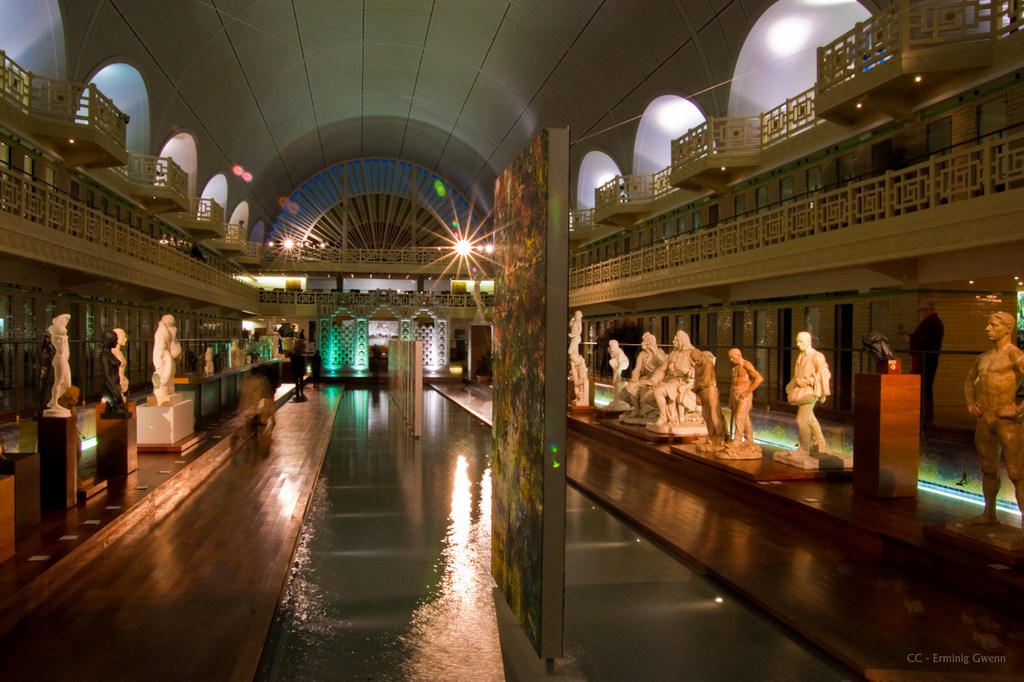
The museum’s collections
La Piscine de Roubaix is the guardian of an impressive and diverse art collection, spanning several periods and artistic movements. The museum not only has a permanent collection, but also organizes temporary exhibitions that introduce visitors to a wide variety of works, many of them previously unseen. The museum’s sculpture collection is one of the most outstanding in the region. It includes works by renowned masters such as Auguste Rodin and Camille Claudel. The sculptures are judiciously arranged around the central pool, creating a play of light and water that brings the works to life. The collection of paintings is equally impressive, with works by such greats as Picasso, Delaunay, Dufy and Van Dongen. The paintings cover a vast period, from the 19th to the 21st century, and represent various styles and movements, from Post-Impressionism to contemporary art.
The museum also houses a rich collection of ceramics. Vases, plates and other objects of ceramic art are on display, demonstrating the diversity and beauty of this art form. The ceramics come from different eras and regions, offering a glimpse of the evolution of this art through time and space. The museum’s collections are spread over three levels, offering visitors an immersive and varied experience. As visitors stroll around the basin and through the galleries, they can discover and appreciate the works of art in a unique and inspiring setting.
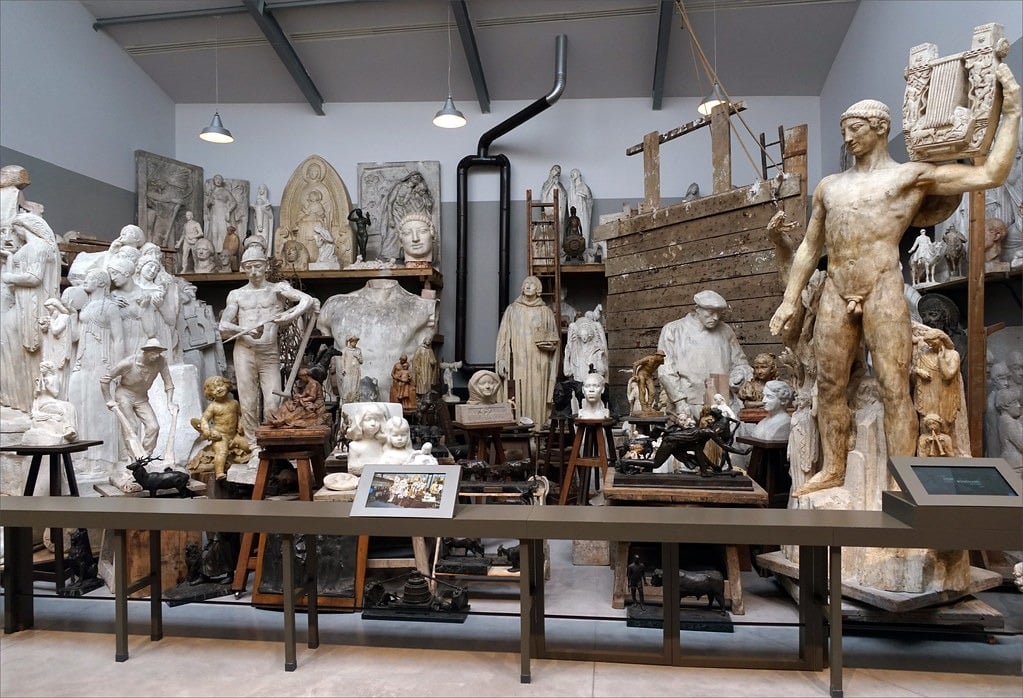
Reconstruction of Henri Bouchard’s workshop
Textiles, a precious heritage
Roubaix, a city closely linked to the textile industry, has witnessed the birth and prosperity of numerous spinning mills and fabric factories over the centuries. This unique industrial heritage has pride of place in the museum. The museum’s textile collection is a veritable treasure trove, showcasing the skills and ingenuity of local craftsmen. It includes fabric samples, garments, accessories and objects related to the textile industry. These pieces bear witness to the evolution of weaving techniques, patterns and styles over time. The fabric samples presented in the collection enable visitors to appreciate the diversity of materials used, from fine, delicate fabrics to more robust textiles for industrial use. The samples also reveal the different dyeing, printing and embroidery techniques employed throughout the region’s textile history.
In addition to fabric samples, the textile collection also includes garments and accessories that reflect the fashions and trends of the time. From sumptuous dresses to traditional costumes and fashion accessories, these textile pieces tell stories of style and society. The museum regularly organizes temporary exhibitions dedicated to the region’s textile heritage. These exhibitions highlight specific aspects of the textile industry, highlighting particular techniques, renowned designers or key moments in Roubaix’s industrial history. Thanks to the textile collection and organized exhibitions, La Piscine offers visitors a unique opportunity to explore the precious heritage of the local textile industry. It’s an immersion in a world where thread and fabric have shaped the region’s identity and economy, while also being a true source of artistic inspiration. 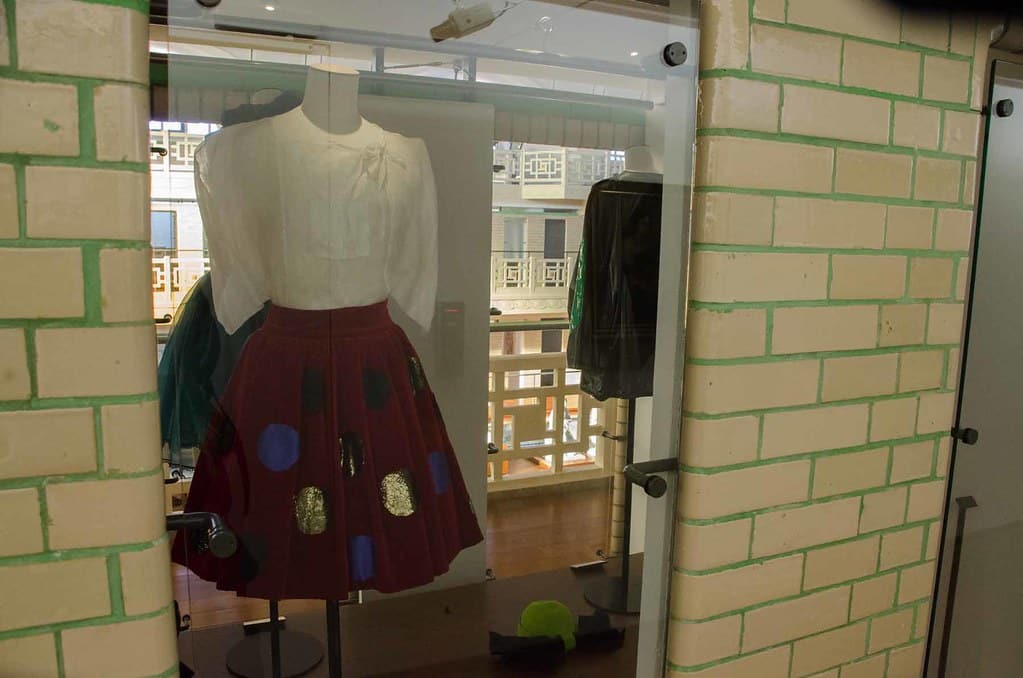 La Piscine de Roubaix is more than just a museum: it’s an immersive artistic and cultural experience in a unique setting. Whether you’re an art lover, history buff or simply curious, this museum offers a unique opportunity to discover a part of the history of Roubaix and the Hauts-de-France region, while enjoying a rich collection of art. The museum is open Tuesday to Thursday from 11am to 6pm, Friday from 11am to 8pm and weekends from 1pm to 8pm.
La Piscine de Roubaix is more than just a museum: it’s an immersive artistic and cultural experience in a unique setting. Whether you’re an art lover, history buff or simply curious, this museum offers a unique opportunity to discover a part of the history of Roubaix and the Hauts-de-France region, while enjoying a rich collection of art. The museum is open Tuesday to Thursday from 11am to 6pm, Friday from 11am to 8pm and weekends from 1pm to 8pm.
Geographical location
C.L.
